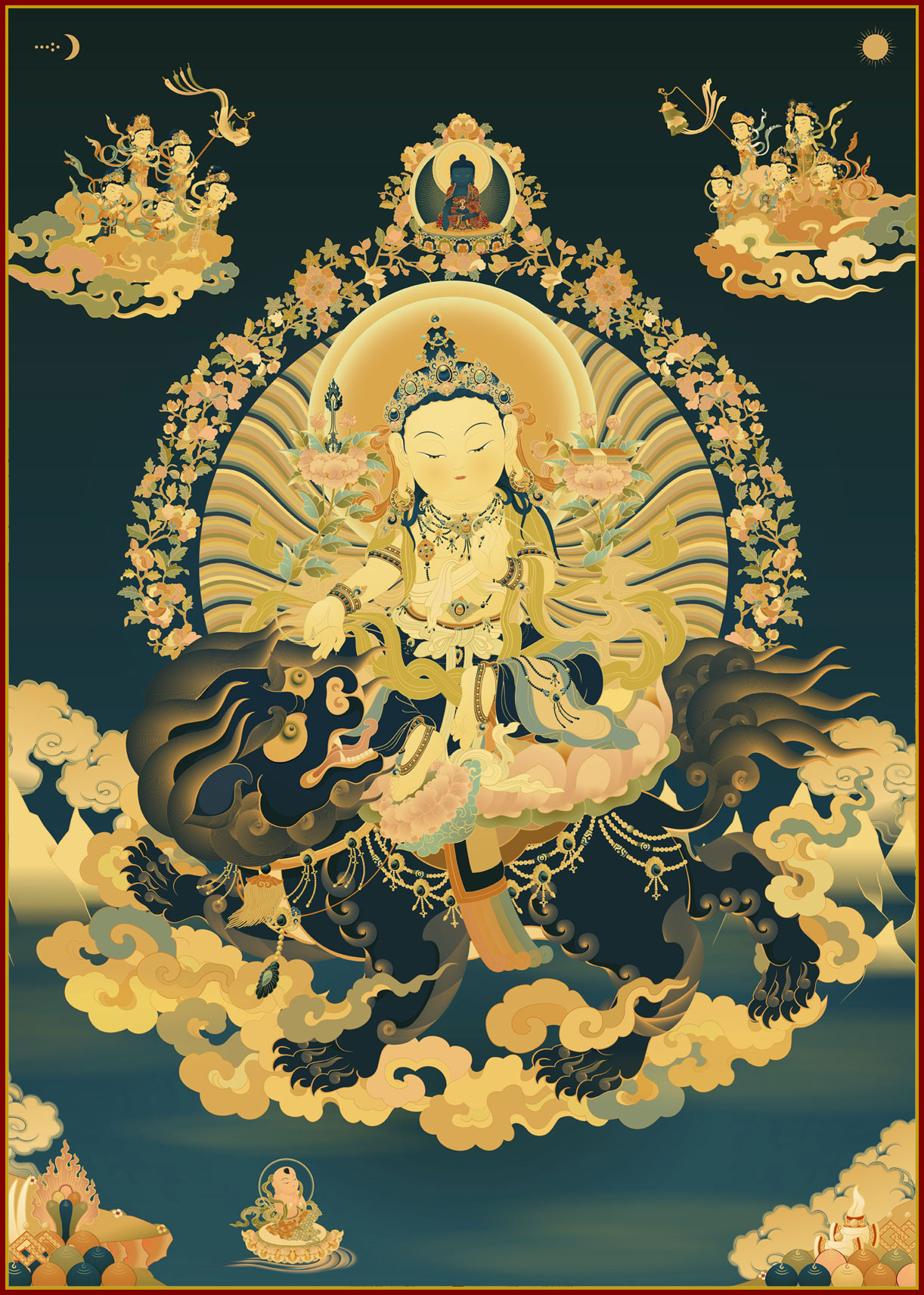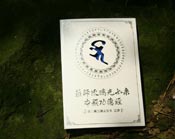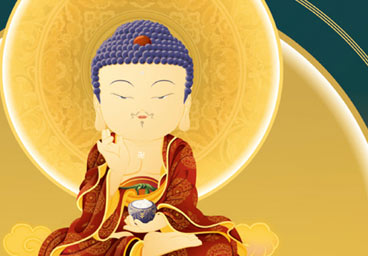Manjusri/文殊菩薩
Scholars have identified Manjusri as the oldest and most significant bodhisattva in Mahayana literature.

Manjusri is first referred to in early Mahayana sutras such as the Prajnaparamita sutras and through this association, very early in the tradition he came to symbolize the embodiment of prajna (transcendent wisdom). The Lotus Sutra assigns him a pure land called Vimala, which according to the Avatamsaka Sutra is located in the East. His pure land is predicted to be one of the two best pure lands in all of existence in all the past, present, and future. When he attains buddhahood his name will be Universal Sight. In the Lotus Sutra, Manjusri also leads the Nagaraja's daughter to enlightenment. He also figures in the Vimalakirti Sutra in a debate with Vimalakirti where he is presented as an Arhat who represents the wisdom of the Hinayana.
Iconography
Manjusri is depicted as a male bodhisattva wielding a flaming sword in his right hand, representing the realization of transcendent wisdom which cuts down ignorance and duality. The scripture supported by the padma (lotus) held in his left hand is a Prajnaparamita sutra, representing his attainment of ultimate realization from the blossoming of wisdom. Manjusri is often depicted as riding on a blue lion or sitting on the skin of a lion. This represents the use of wisdom to tame the mind, which is compared to riding or subduing a ferocious lion.







